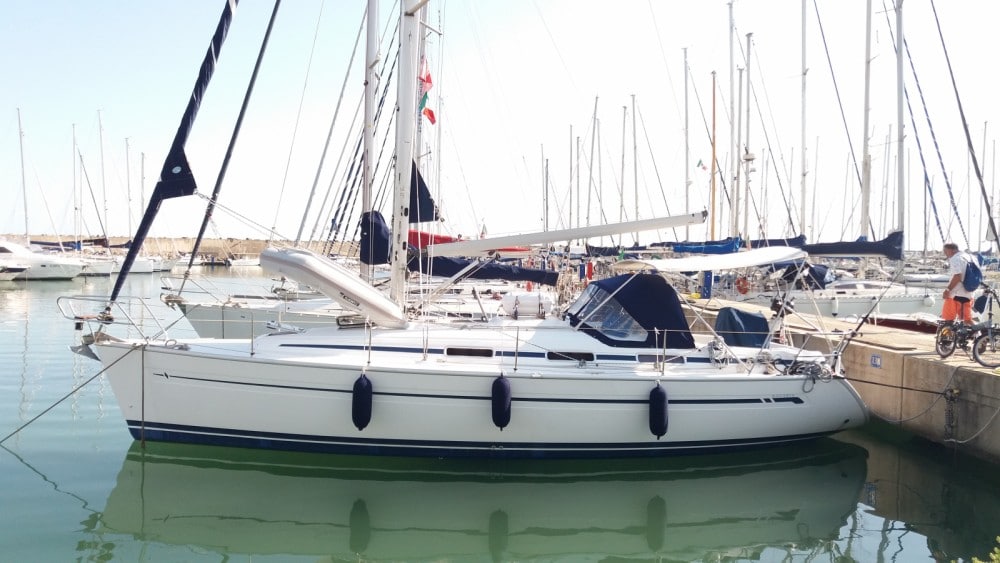Außerdem wollte ich den Luftwiderstand beim Segeln reduzieren (es macht Spaß, schnell zu fahren, wenn die Bedingungen stimmen).
Ich habe viel über Feder- und Faltpropeller geforscht und da mein Boot sowohl vorwärts als auch rückwärts wie ein Traum funktioniert, wollte ich diese Eigenschaften beibehalten oder vielleicht verbessern. Ich entschied, dass der Federpropeller der einzige Weg war.
Ich fing an, alle Federpropeller zu recherchieren und zu vergleichen, die ich finden konnte, und war drei Jahre hintereinander auf der Bootsausstellung in Düsseldorf. Zwei davon verbrachte ich ein gutes Stück damit, die verschiedenen Hersteller der zeigt an.
Ich traf meine endgültige Entscheidung auf der Grundlage dessen, was meiner Meinung nach der am besten konstruierte Propeller war, auch der teuerste. Dies ist oft der Fall, aber nicht immer.
Wie auch immer, ich habe den neuen Ewol-Propeller im letzten Juni montiert und obwohl ich denke, dass ich ihn gerne ein wenig teaken würde (eine äußerst schöne Funktion beim Ewol), komme ich ganz einfach und schnell zum oberen Ende der maximalen Drehzahl. Ohne es zu optimieren, habe ich eine viel bessere Höchstgeschwindigkeit, ich habe die gleiche Reisegeschwindigkeit wie die V…. Propeller. bei 2000 U / min. Reverse ist besser mit dem Ewol, denke ich, weil es drei Klingen anstelle des V sind…. zwei. Das Segelerlebnis ist sehr auffällig und bringt mich wirklich zum Lächeln. Besonders bei leichter Luft. Das Boot scheint mir nur «rutschiger» zu sein. Natürlich ist es schwierig, mit harten Beweisen zu dokumentieren, aber ich glaube, ich bekomme gute 1 bis 1,5 Knoten bei Windgeschwindigkeiten von bis zu 20 Knoten.
Nächsten Sommer werde ich es ein bisschen optimieren und berichten.
Außerdem habe ich extra bezahlt, um die Requisite zu polieren (ich dachte, ich würde sie nur mit einem 3M-Pad sauber halten). Dies war gegen die Empfehlung von Ewol. Es war ein Fehler, also werde ich es diesen Winter etwas aufrauen und die Farbe verwenden, die sie empfehlen.Zai
Original Text
I used a V…. two blade fixed propeller for about five years. Never had any problems with it. However I didn’t like the fact that when sailing I had to have the drive in gear and have heard stories about when sailing fast it can actually turn the engine over backwards and suck in water (never happened to me though). I tried a few times to leave the gear in neutral, as some have recommended, but the engine would shake quite a lot and I didn’t feel comfortable with that. It was explained to me that this shaking was a symptom of the large amount of drag that the fixed propeller actually has (which seems more than I would have thought).
Also I wanted to reduce drag when sailing (it is fun to go fast when conditions are right).
I did a huge amount of research about feathering vs. folding propellers and since my boat handles like a dream both in forward and reverse, I wanted to keep or maybe improve these characteristics. I decided that the feathering prop was the only way.
I started to research and compare all of the feathering propellers I could find and was at the boat show in Dusseldorf three years in a row two of which I spent a good bit of time looking and inspecting « hands on » the various manufacturers at the shows.
I made my final decision based on what in my mind was the best engineered propeller, also the most expensive, but this is often the case but not always.
Any way I mounted the new Ewol propeller this last June and although I think I would like to teak it a bit (an extremely nice feature with the Ewol) as I am getting quite easily and quickly to the high end of the maximum rpm. Without tweaking it I have a much better top speed, I have the same cruising speed as the V…. prop. at 2000 rpms. Reverse is better with the Ewol, I think because it is three blades instead of the V…. two. The sailing experience is very noticeable and a really makes me smile. Especially in light air. The boat just seems more « slippery » to me. Of course it is difficult to document with hard evidence, but I believe I am getting a good 1 to 1.5 knots in winds up to 20 knots.
Next summer I will tweak it a bit and report back.
Also I paid extra to get the prop polished (thinking that I would just keep it clean with a 3m pad). This was against the recommendation of Ewol. It was a mistake, so this winter I will rough it up a bit and use the paint they recommend.
Zai






